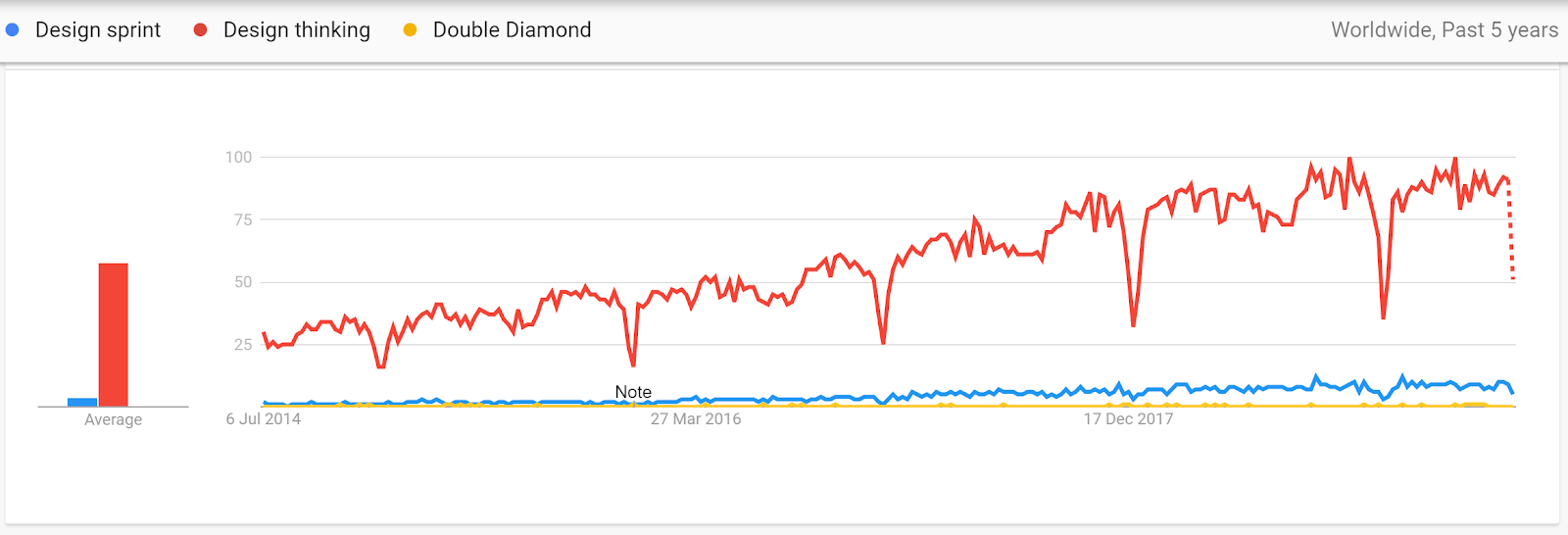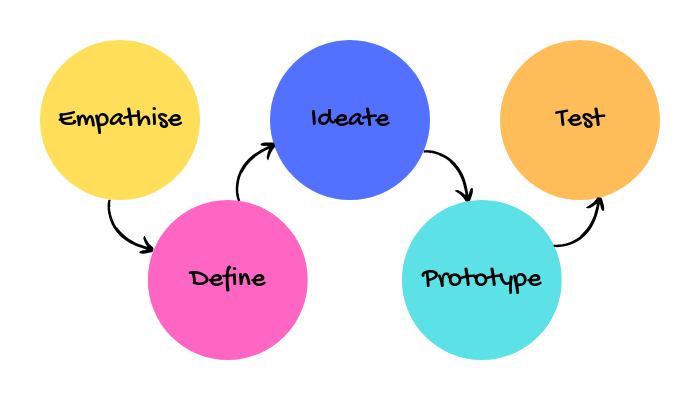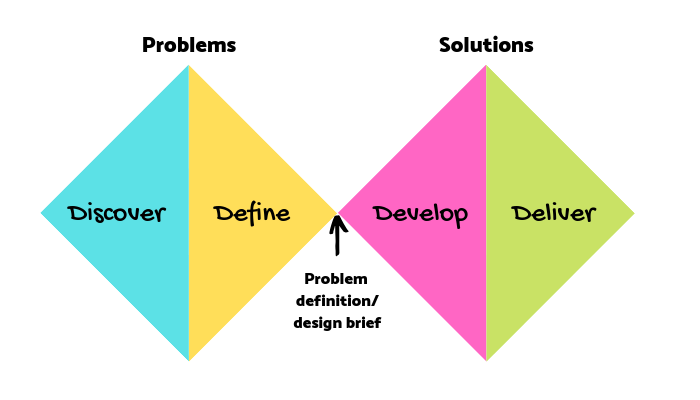 Image by StartupStockPhotos from Pixabay
Image by StartupStockPhotos from Pixabay
Process has become a dirty word, but using a tried and tested product design process when designing products is a way to get better outcomes.
Design Process, when applied in the right way, is the best way to unleash creativity, fast forward results, and bring stakeholders along on a journey. Design process also has a great way of allowing you to stand on the shoulders of giants, by giving you a way to gain insights from lessons learnt by others.
If, like me, you would prefer to stand on the shoulders of giants rather than relearn lessons yourself, then you?ll want to apply the best processes out there, rather than roll your own. But with the multitude of product design processes to choose from, part of the challenge is finding the right one for your situation, your team and your organization.
This article is about giving you a starting point to narrow down what product design process is right for you and your team, for the opportunity or problem you?re wrestling with right now. I say right now because I?m a big fan of flexibility, adapting the right process to the right situation rather than a blanket application of the one process to everything.
To help us narrow down the best product design process to use, let?s first turn to Google search to help us identify the process with the most interest (yes I hear you, popularity doesn?t always equal quality but we need to start somewhere).
Product Design Process by Interest
Google Search Trends tells us that the product design process that has the most interest or users are (in order of search volume):
- Design Thinking
- Google Design Sprints
- Double Diamond

Some others that didn?t make it due to lack of search volume but deserve an honorable mention:
- UX Mastery?s UX Process
- Zurb?s design process
1. Design Process: Design Thinking
Design Thinking is a process or set of processes for designing concepts like new products, buildings and machines. It has become closely associated with innovation and the creation of innovative products and services.
Design Thinking, especially when combined with human centered design, is about starting with the human at the end (or in the middle) of your product, developing empathy with them, understanding them and working through solutions to their problems through ongoing experimentation.

The Design Thinking process has the following steps:
- Empathize
- Define
- Ideate
- Prototype
- Test
Importantly, the steps do not need to be followed one after the other. It is encouraged to jump between steps and repeat steps in an effort to best address the situation you?re working with.
When to use it?
Design Thinking is great for understanding or solving open-ended problems in a specific domain. It isn?t useful in situations where the outcome is mostly known in advance. It can be useful as a tool in helping to choose the domain to get specific, but it isn?t always the best fit for this.
Some useful links
If you want to learn more about Design Thinking then here are some useful links:
- IDEO
- Interaction Design Foundation
- Harvard Business Review
2. Design Process: Google Design Sprints
Design Sprints, a methodology developed by Google, provides a short, focused approach to bring together a team, understand and then solve a problem.
The beauty of a Design Sprint is how it compacts different frameworks, methods, steps and considerations into a nice 1?5 day package. The simplicity of the approach, and the contributions of Google as well as the community make this an accessible and easy to apply process for product design.

The main steps in a Google Design Sprint are:
- Plan
- Understand
- Define
- Sketch
- Decide
- Prototype
- Validate
The plan step tends not to show up in diagrams for some reason however, planning for a Design Sprint is every bit as essential to the process as running the Design Sprint itself.
When to use it?
The Design Sprint Kit by Google says Use Design Sprints:
- At the start of a new initiative to define your product or create a shared vision
- When you need to inject speed into your decision making process
- If your product team has become blocked on a problem
- After uncovering new insights you want to action/leverage
Don?t use Design Sprints:
- If you don?t have a strong enough understanding of your customer base
- If you have clear product direction and just need design time
- If you don?t have leadership buy-in
However, to provide some perspective, I?ve seen counter examples of Design Sprints helping understand a customer base and gaining leadership buy-in. I?ve also seen situations where trying to run a process like a Design Sprint slows down time critical situations and you just need to get on with it (usually a leader needs to just make some tough calls and set people going).
Finally, another area where Design Sprints aren?t useful is as a process for choosing which direction to go more broadly (e.g. what market do we want to be in?), although it can be a tool here.
Some useful links:
- Design Sprint Kit by Google
- Sprint (book by Jake Knapp)
- Really practical no-extra-clicks guide to running Design Sprints from Toptal
- Some adaptations, additions and usage comments from Invision:
- When a design sprint doesn?t work
- Hacking design sprints
- How to get business value
3. Design Process: Double Diamond Design Process
The Double Diamond Design Process, mapped out by the Design Council, captures the commonalities of the creative process across disciplines and divides it into four distinct phases: Discover, Define, Develop, Deliver.
The visual image of two diamonds next to each other makes it memorable and easy to understand. The visual of the diamonds also depicts how ideas need to go through divergent thinking (the opening of a diamond) then be refined through convergent thinking (the closing of a diamond).

The visual metaphor of the diamonds helps teams apply the appropriate tools and techniques for the part of the diamond their product work is in.
When to use it?
The Double Diamond is most useful when a longer running process and/or a broad canvassing of ideas is required. Walking through every step of the diamond isn?t particularly useful when you?re dealing with a situation where the result is mostly known and you just need to get on with getting it done.
Some useful links:
- The official Design Council UK guide (includes details on each part of the Diamonds)
- The Double Diamond Strategy + Execution of the Right Solution
- How to think creatively using the Double Diamond framework
How does this relate to Agile, Lean Startup, prioritization frameworks and other methodologies?
The Product Design Process lists that I?ve shared above can be incorporated into agile teams and those following the Lean Startup. You can also apply product prioritization frameworks based on what you learn or to what you?re planning to do.
Using some common sense you can practically combine this into exactly what you need for the situation at hand. If there is conflict, unnecessary steps or anything like that, then just remove it and use what you need.
Originally published at https://www.terem.com.au on August 16, 2019.




